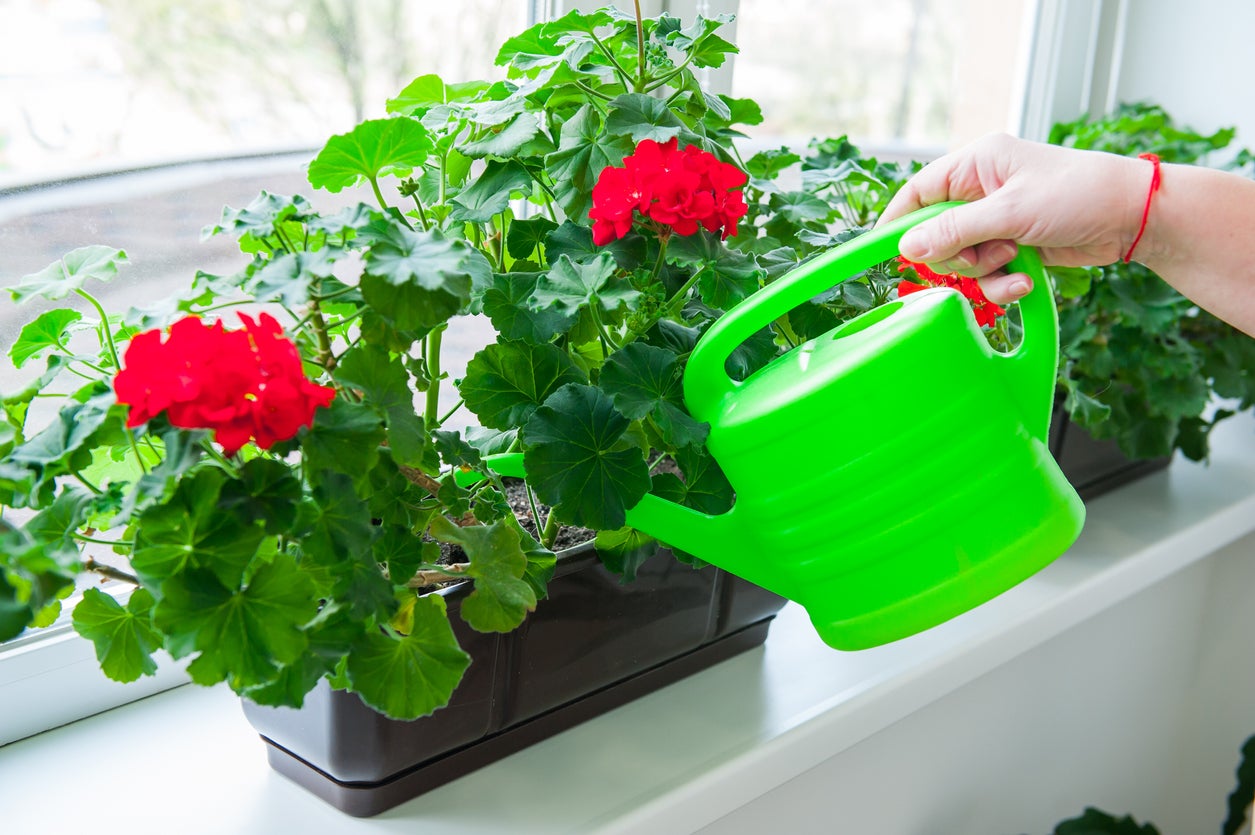Geranium Houseplants: Learn How To Grow Geraniums Indoors

Although geraniums are common outdoor plants, it is very possible to keep the common geranium as a houseplant. There are a few things that you need to keep in mind in terms of growing geraniums inside, however.
About Geranium Houseplants
Before we take a look at indoor geranium care, it’s worth mentioning that there are many different varieties of geraniums.
The most common variety that is seen everywhere is the zonal geranium. These flower in a variety of colors including white, red, pink, salmon, lavender, and others.
Another variety of geranium are the ivy leaf geraniums. These have waxier leaves and are trailing in habit and also flower in a variety of colors.
The Martha Washington geranium is another type of flowering geranium but these are not as heat tolerant as the rest.
Finally, there are various scented geraniums that are grown mainly for the lovely fragrance their leaves produce. They come in scents such as rose, cinnamon, lemon, and many others.
How To Grow Geraniums Indoors
Indoor geranium care is easy if you can give your plant the following care:
Sign up for the Gardening Know How newsletter today and receive a free copy of our e-book "How to Grow Delicious Tomatoes".
- Light – In order to produce sturdy plants indoors and flowering, it is important to place your geranium houseplants where they will receive at least six to eight hours of direct sun. If you don’t happen to have appropriately sunny windows, you can supplement with artificial grow lights for about 14 hours a day in order to keep the plants in good condition.
- Soil and Watering – Use a soilless potting mix for your geraniums. Geraniums like a light, loamy potting mix that is well drained. Allow your geranium’s soil to dry out pretty well in between thorough waterings. If you keep the soil too wet, these plants are very prone to diseases such as gray mold, blossom blight, and rust.
- Temperature – Geraniums tend to prefer cooler temperatures. Ideal temperatures are 65 to 70 degrees F. (18-21 C.) during the day, and around 55 degrees F. (13 C.) in the evening.
- Fertilizer – For good growth and flowering, you should fertilize your indoor geraniums during the growing season. Time-release fertilizers can be used or an all-purpose liquid fertilizer at about half strength about once a month.
- Pot Size and Pruning – Geraniums like to be somewhat potbound, so make sure not to overpot these plants. Also, to encourage a bushy plant, prune back any leggy canes and pinch back the growing tips in order to encourage a bushier plant.